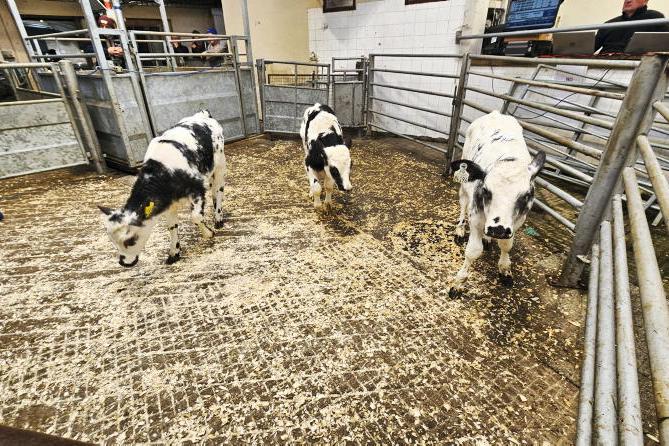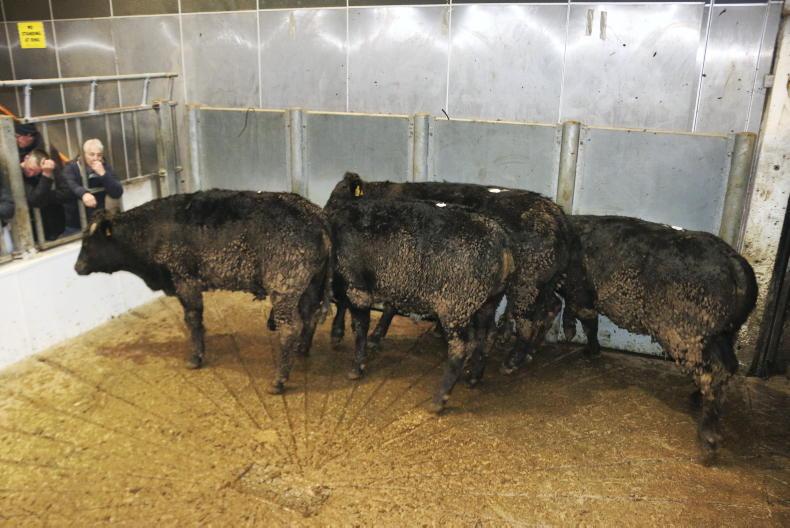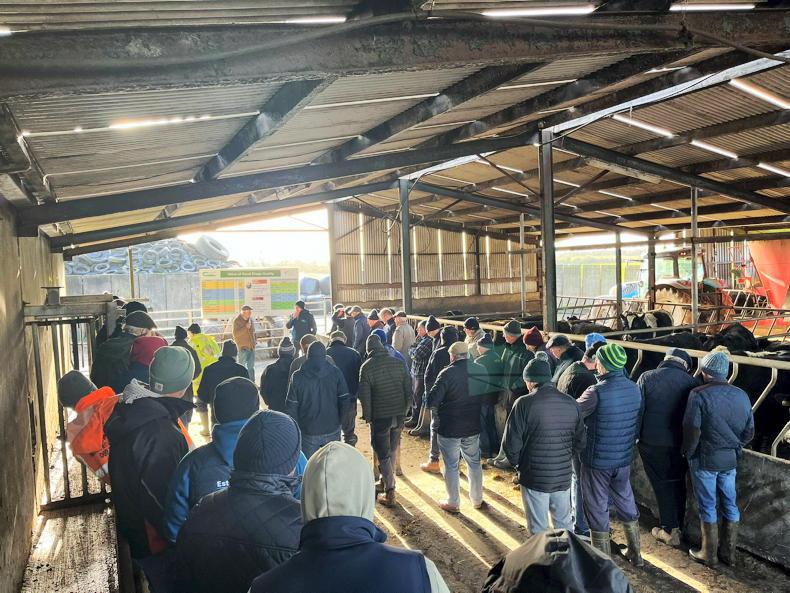There continues to be huge interest in calf rearing with calf price always being a talking point at this time of year.
A dramatic increase in the availability of Aberdeen Angus and Hereford dairy beef calves has seen some farmers either bolt a dairy beef enterprise onto an existing suckler herd or switch over completely.
A question that comes up every year from farmers is: “What price can I pay for calves this spring?”
There’s a huge variation in quality out there and sometimes it’s hard to pick out good calves from bad ones at two weeks of age.
The last two weeks have seen some very high prices being paid for calves in marts
Figures and genetic indexes aren’t for everybody but the commercial beef value (CBV) index should be factored into calf purchases, aiming for high CBV indexes.
The last two weeks have seen some very high prices being paid for calves in marts.
This always happens early in the season, with some beef farmers putting a particular value on an early calf. Paying big money for calves leaves it very hard for a margin to be left at the other side, so exercise caution when you’re waving €20 bids at the auctioneer.
Huge numbers of calves will come on the market from the beginning of March onwards with the market adjusting to the supply and demand for calves very quickly.
When done well, a dairy calf-to-beef system can complement a suckler or sheep system quite well in terms of labour input and can help increase the overall farm output.
However, with rising input costs currently being felt on farm, this is not the year to enter into a calf-to-beef system without giving it serious consideration.
Even those who have been doing it for the past number of years and have a good handle on the system, animal performance and the costs involved, will need to scrutinise the figures before investing in the usual number of calves this year.
Budget
Sitting down and doing out a budget simply must be step number one this year. If you plan to invest money into these animals and bring them through to slaughter, you will be looking at them for at least the next 18 months to two years.
That is a long time to have money tied up in a system so you need to know if you will get a return on your investment.
Be realistic in your costings
While we cannot predict what the price of beef will be when these animals come to the point of slaughter, we can figure out what price we will require to make a margin by adding up all our input costs.
Be realistic in your costings. If your winter period is typically six months then there is no point in costing it for four months in the hopes of favourable grazing conditions this autumn and spring next year.
Where the system has been in place on farm for the last few years, use your cattle performance figures to forecast costings for the year ahead
Likewise with daily liveweight gain targets; we might aim for doing 1.2kg/day at grass, but in reality – even with very good grassland management – these type of stock would be doing very well if they grow in excess of 1kg/day over an entire grazing season. Where the system has been in place on farm for the last few years, use your cattle performance figures to forecast costings for the year ahead.
Costs to include
Table 1 outlines a simple budget that can be completed on any farm this spring. All costs are on a per-head basis. Three calf prices have been included at €50/head, €100/head and €150 head.
Poorer-quality calves will have a reduced ability to put on weight so carcase weight targets could be a lot harder to hit with these animals.
The performance figures included are at the high end, but achievable if management is good.
Indoor finishing costs can spiral very quickly where an animal is on a high level of meal feeding
If it’s your first year rearing calves or if your farm has a heavy soil type, the performance figure should be amended back a little in line with expected turnout dates etc.
Coming into the shed at the end of the finishing period will also have a big effect on the margin achieved. Indoor finishing costs can spiral very quickly where an animal is on a high level of meal feeding.
A 500kg heifer eating 5kg of meal and ad-lib silage could be costing as much as €2.50-€3.00/day to feed, so every month longer on the farm during the housing period means close to €100 less of a margin.
While not included in the table, farmers should include a mortality figure as, unfortunately, there will be some losses along the way and these need to be accounted for in the budget.
Well-run systems will be hitting less than 2% mortality, but if it is your first time rearing calves a 5% figure might be more realistic.









SHARING OPTIONS